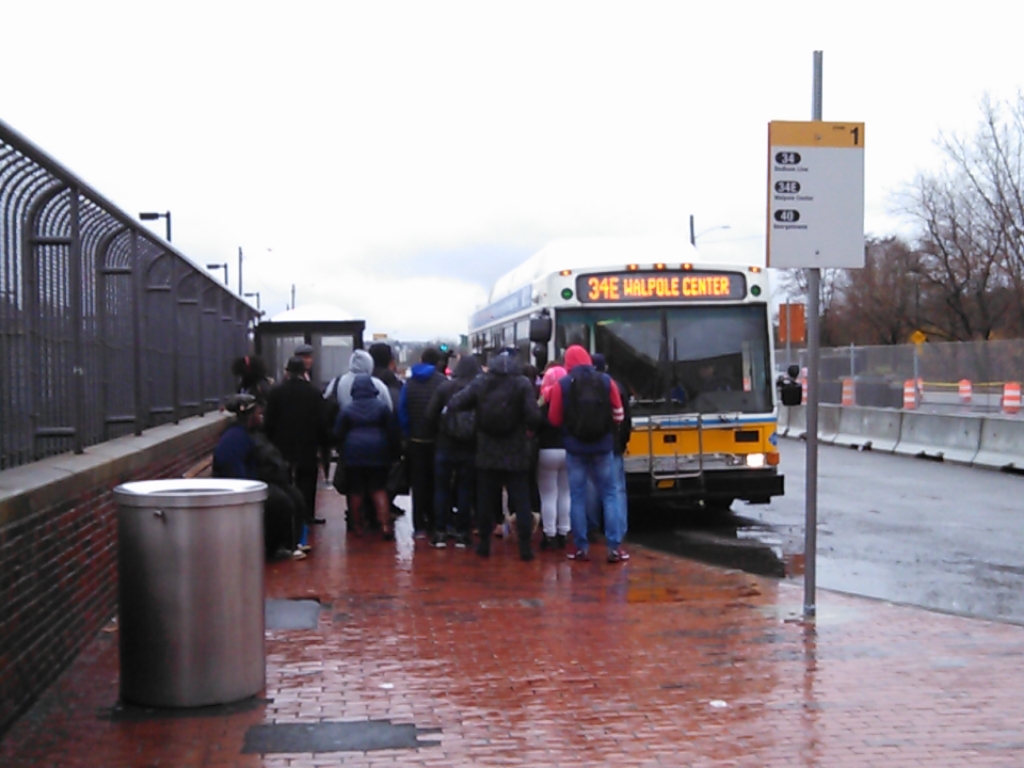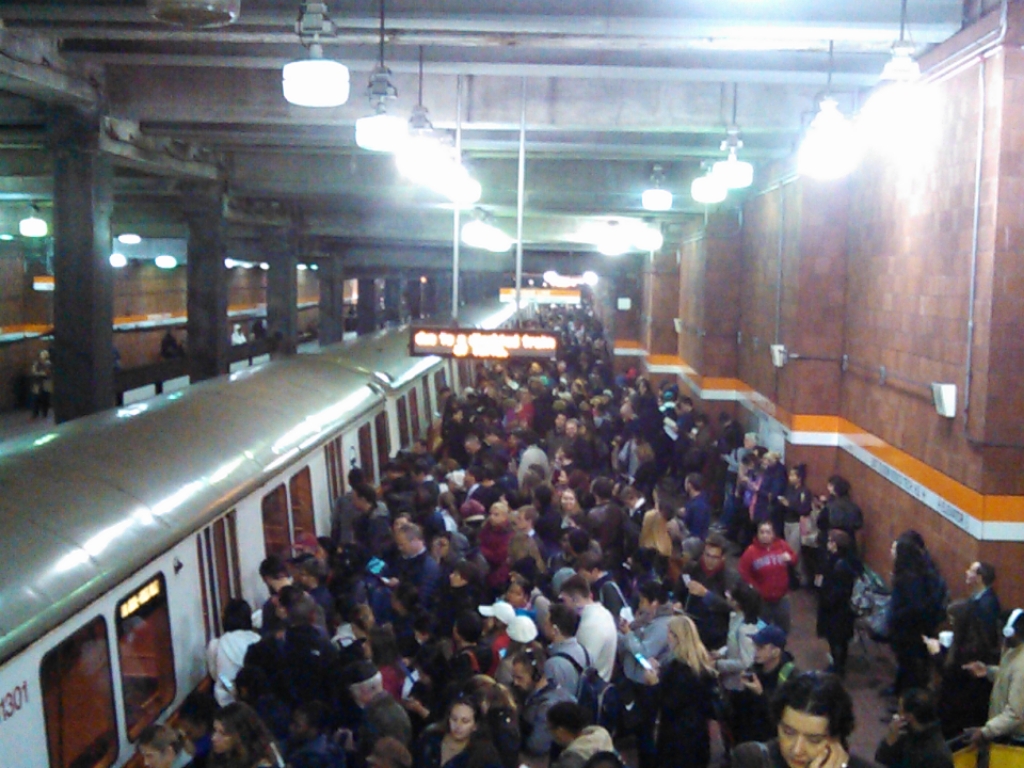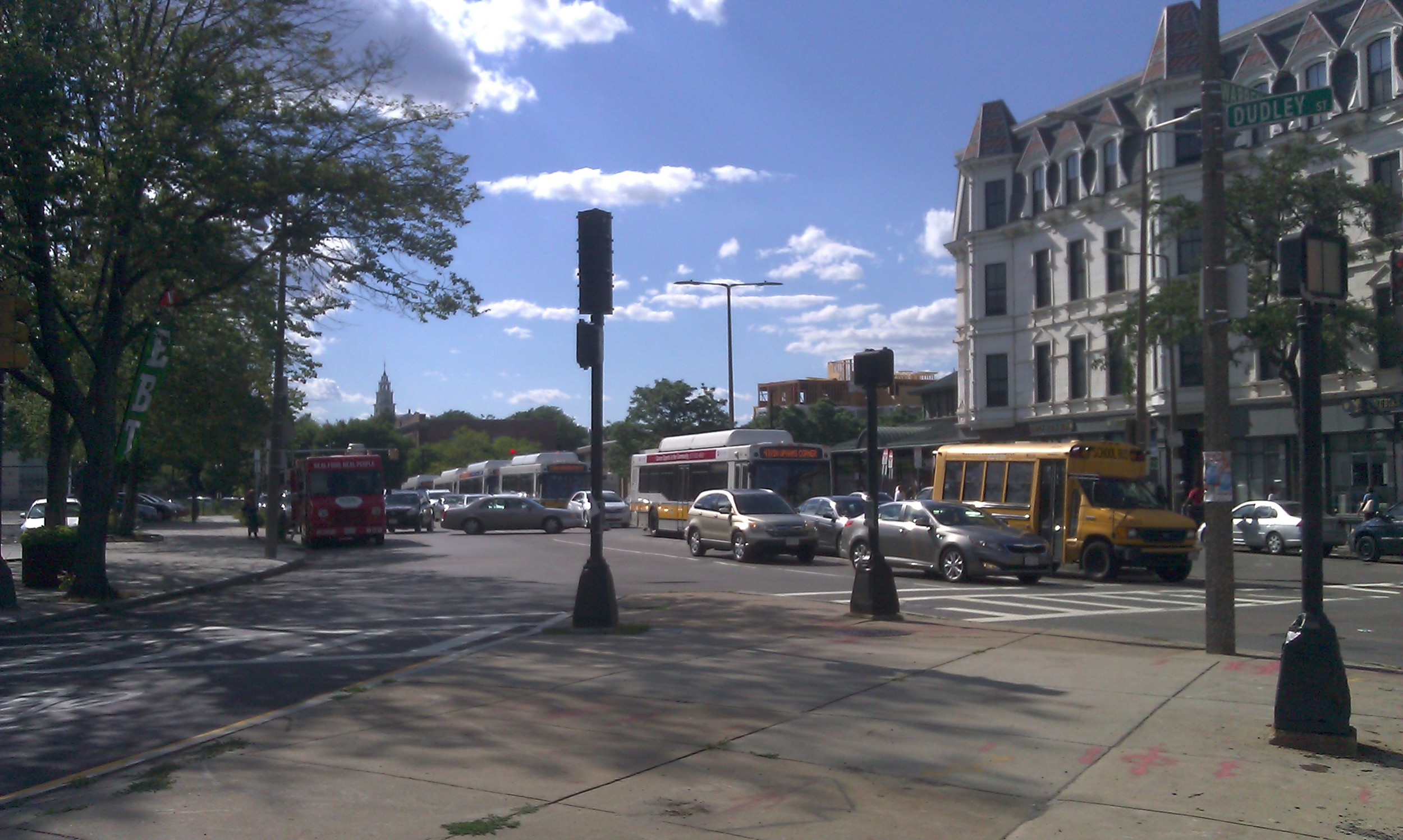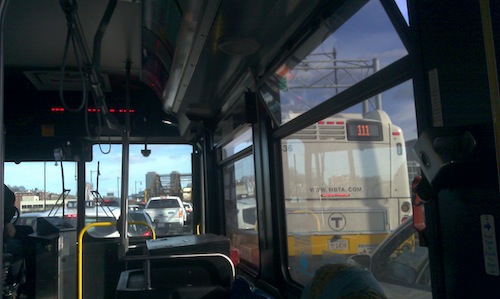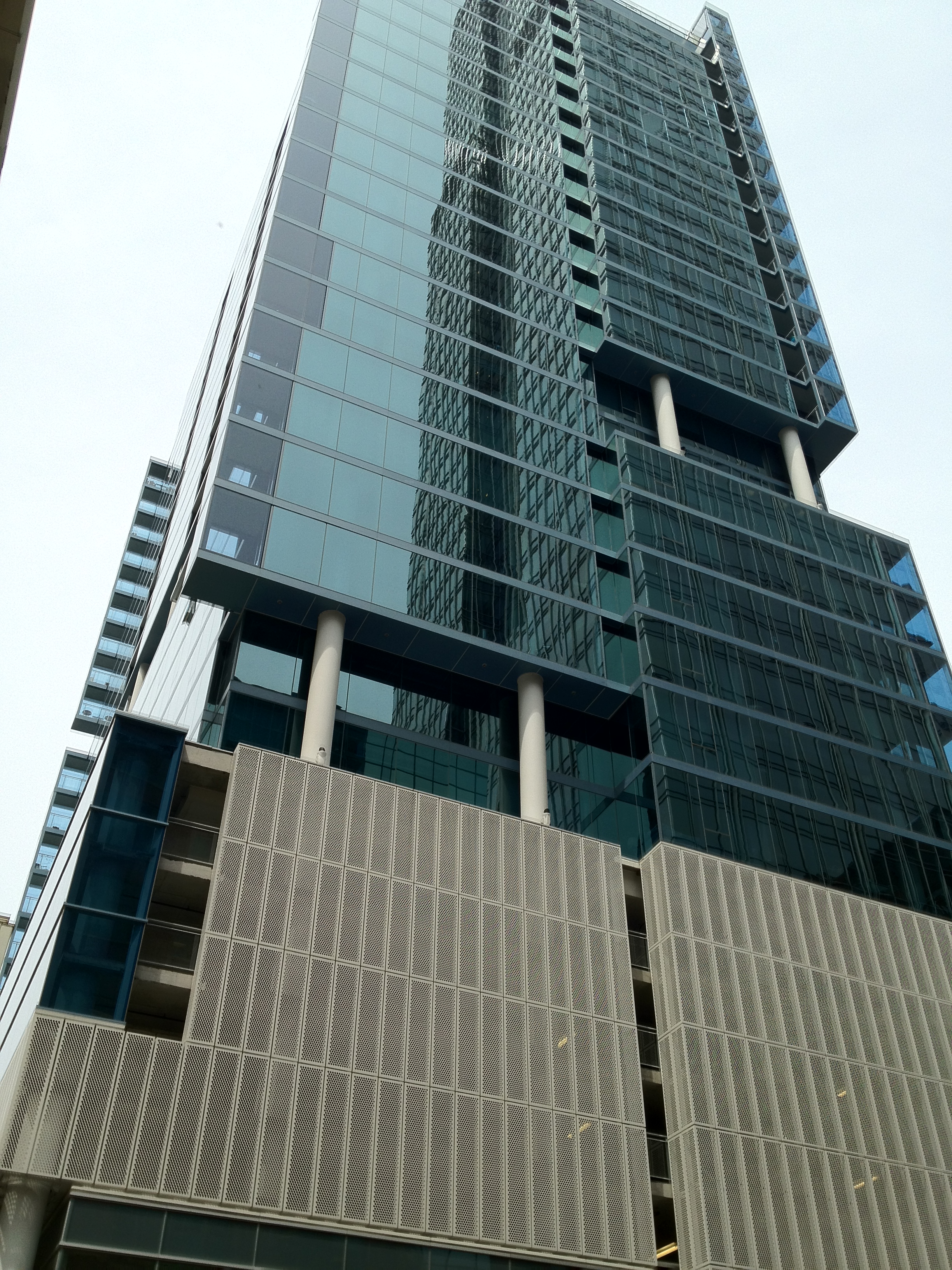
The Case Against MBTA Fare Increases—And How to Move Forward
The MBTA fare increase proposals (presentation, summary) are unnecessary and not even helpful in closing the budget gap. We summarized all the feedback we've received and proposed alternatives to increase ridership and revenue and reduce operating costs.
The MBTA fare increase proposals (presentation, summary) are unnecessary and not even helpful in closing the budget gap. We summarized all the feedback we've received and proposed alternatives to increase ridership and revenue and reduce operating costs.
THE FACTS ON FARES & SERVICE
MBTA fares have more than doubled since 2000, far outpacing inflation and exceeding even the increase in housing prices. Meanwhile the state gas tax has increased only 3 cents and no longer supports the cost of road maintenance, but MBTA riders are being asked to pay their own way.
Commuter Rail fares and parking fees are some of the highest in the nation despite very infrequent service. Record rents and declining wages are forcing large numbers of people out of the city, to places where Commuter Rail is the only transit but is unaffordable. Low ridership has been cited as a motivation for further service cuts, yet when a day trip costs $84 for a family of four, the Commuter Rail is not living up to its potential as an effective regional transportation network.
Ridership is up over 20 percent on all major lines as the city’s population has increased 10 percent in ten years. Trains and buses are slower, more crowded and less reliable than ever. All major rail and bus lines operate over capacity every day and the system does not effectively serve many trips. Failing to increase service by 20 percent is essentially a service reduction. Riders cannot be expected to pay even more without major upgrades such as increased capacity, faster service and new lines — give us a system worth paying for.
Higher fares turn T riders into car drivers and make traffic congestion even worse, unless accompanied by major service improvements or a gas tax increase to make drivingless appealing. With gas prices approaching 11-year lows, commuters see transit fares rising and service quality declining and make the obvious choice. Rather than continue the death spiral of service cuts (yes, eliminating late night service = service cuts) and fare increases until transit is no longer effective and streets are completely gridlocked, now is the time to reverse course and invest heavily in public transportation, including maintaining or lowering fares.
No major investments have been made to the system’s core since the 1980s and we are now paying the price as the MBTA slowly falls apart. The MBTA has made significant progress on reforms but the promised revenue in “reform before revenue” remains elusive. No efficiencies will ever fill the $7 Billion budget gap -- and that's just to reliably run what we have now, without desperately needed upgrades. If we don’t start investing now, the system will only get worse, and it will only cost more when we eventually have no choice. Riders are not responsible for chronic underinvestment and cannot be asked to shoulder the burden of ever increasing debt service payments.
Soaring housing costs and declining wages are forcing many people to move to places with poor transit access. We have repeatedly cut service and raised fares on these "low ridership" services, while ignoring others with great potential.
Governor Baker said there should be no new taxes or fees — apparently not including T riders. The agency’s 4% cost growth is in line with the Governor’s call for a 5% increase in state spending elsewhere. So why is the MBTA Control Board subjecting T riders to a higher standard?
Good transit provides many benefits to all of society — even those who never use it. Public transportation supports dense, vibrant communities where everyone has access to basic needs and the freedom to move around the region. Last winter showed us just how important the MBTA is to the entire state’s economy: without the T, all of our favorite stores, restaurants, institutions and entertainment venues would be unable to attract sufficient customers and employees. Imagine a transit system with the resources to run excellent service every day and make people actually want to use it.
Traffic congestion on our streets and highways is worse than ever because of our failure to upgrade and expand the transit network. Boston EMS ambulance response times have increased 16 percent since 2009, the Boston Fire Department takes one minute longer to respond to calls, and buses spend much of their trip stuck in traffic. Only by expanding transit so it is useful for more people will we create space for essential services and emergency vehicles. Fare increases only put more cars on the road.
Over 100 years after the first subway construction in Boston, the region’s poorest, most underrepresented neighborhoods still lack rapid transit access. Communities such as Chelsea, Roxbury and Mattapan have the longest trip times (often slower than walking) and least reliable bus service. These riders are also most heavily impacted by rising fares, often cutting back on groceries or skipping social events due to the cost of transportation. Special attention should be focused on bringing fast, frequent and more affordable transit to our most vulnerable riders.
Riders are doing their part to support vibrant communities, reduce traffic and address climate change. We should reward - not punish - those who use the MBTA by maintaining or lowering fares across the system and investing in faster and more effective service. Our transit network is a valuable public service, not a profitable business, and it's time we started treating it like one.
ALTERNATIVES
Many simple changes could improve the user experience and help alleviate capacity constraints until service can be expanded. The T should experiment with several options in an effort to upgrade service and reallocate inefficiently used resources, and as alternatives to (or mitigation for) a fare increase. In other words, what improvements are we getting for the higher fees?
Instead of a single transfer, allow unlimited transfers within 2 hours on bus, subway and Commuter Rail, to permit trips through downtown and between non-downtown points. Currently it is impossible to go from Roxbury to Chelsea, Everett to Brighton Center, or Roslindale to Brookline (just a few examples) without two fares or a very long trip with a transfer downtown. Removing the barrier would allow riders to make more efficient trips and access more jobs while increasing ridership (and revenue) and reducing congestion in the downtown transfer stations. An unlimited transfer — think of it as a 2-hour unlimited pass — is in effect on transit systems across the country such as Portland, Minneapolis and San Francisco.
Implement all-door boarding on buses and trolleys. Pass users could board at any door and special fare inspectors would conduct occasional inspections, issuing a fine to riders who haven’t paid. Up to 30 percent of Green Line and bus travel time is spent sitting at stops while riders line up in the cold waiting to tap their card. Keeping buses and trolleys moving means faster service, more frequent service, more evenly spaced trains/buses, reduced fare evasion and lower operating costs. All-door boarding is now standard practice on nearly all North American light rail lines and San Francisco has expanded it to all buses.
Reduce Commuter Rail fares on off-peak and weekend trains. As record numbers of urban dwellers leave the region’s core to escape soaring rents, the Commuter Rail has the potential to dramatically improve their quality of life. Yet commuter Rail fares are too expensive, even off-peak trains operate with hundreds of empty seats that could offer a fast new service to riders of all income levels. Thousands of riders endure long trips on crowded buses or limit their economic and social opportunities because of transportation costs. Many more drive choose driving over the high train fare, adding thousands more cars to our streets every day.
Extend Zone 1A (subway fare) to include all stations within 12 miles of downtown Boston, roughly the distance to Braintree, Waltham or Lynn, or anywhere within Route 128. It is expensive to provide very frequent service on slow, crowded buses to places like Hyde Park, Roslindale, Waltham and Lynn while train cars run empty.
Heavily discount Commuter Rail fares during off-peak periods and on weekends. Chicago and Philadelphia have seen large ridership increases with their $8 unlimited weekend (Chicago) and $12 unlimited (Philadelphia) off-peak passes.
Integrate fares between subway, bus and Commuter Rail so that riders can pay with a CharlieCard. Issue transfers valid between the Commuter Rail and a subway or bus line. Add a credit card payment option.
Coordinate bus connections at terminals, stations and transfer locations. Improve scheduling of connecting services and hold buses and trains for close connections during times of less frequent service.
Upgrade bus stops, stations and terminals to improve service quality and comfort, allow more efficient bus and passenger circulation and increase ridership at very low cost.
Implement transit priority measures on city streets for faster, more reliable and less costly bus and trolley service. Faster service and increased on-time performance were among the top requests from participants in the GoBoston 2030 transportation planning process. Many simple signal modifications and street design changes would help meet these goals.
If fares do increase, offer free and discounted passes for low-income riders through social service programs such as SNAP, WIC and MassHealth. Expand student pass programs through cities and university groups. However, the availability of low-income discounts must not serve as a justification for fare increases.
WHAT CAN I DO?
Speak up at a public meeting, submit comments and contact your representatives. Your city and state elected officials need to hear from you; remind them that the MBTA benefits everyone in the state and we must make up for our past mistakes. Otherwise the death spiral of high fares and poor service will continue -- more breakdown, delays and late trains/buses -- until our once-proud transit network falls apart for good.
Get a Backbone! Cut the Bulls**t Off-Street Parking
 Boston has a strange way of committing to walkability, transit accessibility, and the adjustment of cultural expectations for parking per Menino's claim that 'the car is no longer king in Boston'. A large number of transit-oriented developments in and around Boston come with a lot of parking and even more is about to be built at a development that could've easily done without it.
Boston has a strange way of committing to walkability, transit accessibility, and the adjustment of cultural expectations for parking per Menino's claim that 'the car is no longer king in Boston'. A large number of transit-oriented developments in and around Boston come with a lot of parking and even more is about to be built at a development that could've easily done without it.
When news about a parking-free development in Allston started making the rounds in January, many in the neighbourhood vehemently argued against the development with the fear of increased parking pressures that we've come to expect of public comment in Boston.
Saying that the building won't have any parking is very disingenuous. The project was originally submitted to the Boston Redevelopment Authority[PDF] with the plan to have six parking spaces for car sharing services (e.g. Zipcar or Hertz Connect). Instead, the development was approved with 35 parking spaces.
Paul McMorrow nails the issue right on the head in his Globe editorial:
Nearly every developer who has ever tried to build in Boston has run into neighborhood interference over parking. Bostonians will shiv anyone who threatens to dilute the supply of free on-street parking. It’s the city’s job to calm these fears, and strike a balance between neighbors and developers, who cover the astronomical costs of building off-street parking by collecting inflated rents. This balancing act shouldn’t be as delicate as it once was, since city-dwellers are now far less married to their cars. But it’s still up to the city to make parking regulations catch up to the market.
[Sebastian] Mariscal’s Allston development isn’t overreaching at all by zeroing out cars entirely. It’s in a part of town that will undergo a dramatic transformation over the next decade, thanks to New Balance’s New Brighton Landing development. Mariscal’s building site is three blocks from a planned commuter rail stop. It’s a 10-minute walk from the Green Line. These are hardly insurmountable distances. And the market for car-free housing is far greater than Mariscal’s doubters believe. More than half of Boston residents currently take the T, bike, or walk to work. There are now 27,000 more car-free workers living in the city than there were a decade ago. Gathering 44 of them in one building should be a layup. Getting the city’s blessing to do so should have been, too.
The concerns about increased parking pressures were, as usual, not quantified or contested despite the fact that our apartment-dwelling urbanites are re-learning how to share, car sharing significantly reduces car ownership or the potential to own a car, and a shit ton of parking will be dumped on the area when New Balance's New Brighton Landing is finished. Add to that the state's commitment to a new commuter rail stop to…mitigate the need for parking? Wait, what’s going on here?
As noted in New Balance's submitted project documents, there's already a 1,200 space parking garage for the existing development and all new parking will be provided on-site. So a new commuter rail station is being put in, but we're still anticipating a need for larger amounts of parking?
The BRA's own vision for the area is inspiring and talks about developing a walkable, transit-oriented neighbourhood, but their recommendations for transportation improvements talk more from the perspective of improving car throughput and access to the Mass Pike and leave transit improvements to the hopeful increase of bus service and eventual arrival of a commuter rail station.
Parking and the availability of it in future developments further dramatically affects transit use and the effectiveness of transit, even with increased frequency of service, despite promising to increase the area's 'traffic' throughput. In fact, it's the sheer volume of car traffic that already chokes the existing roads and, in turn, transit service. More parking will only serve to give more people the option to drive.
The area's debilitating automobile traffic is a major reason why the 57 and 57A are late at least 35% of the time, which likely is disproportionately felt by the majority of riders who use the bus during rush hours. The 64, which directly serves the New Balance site and runs past Mariscal's 37 North Beacon St, is late almost 40% of the time.
This isn't to say service can't be improved in spite of additional parking, but no plans have been revealed so far to include dedicated bus lanes or other forms of transit prioritization to improve the reliability of the existing bus service. Without it, the area will remain auto-dependent and people will continue opting to drive and sit in traffic rather than wait for late and crowded buses.
And it's not just in Allston...
Similar visions of parking-loaded 'transit-oriented' developments have been approved immediately next to the new Yawkey Station that will also see increased commuter rail service and adjacent the new Assembly Square station on the Orange Line. The Assembly Row development in Somerville was approved with 10,066 spaces[PDF] while the Fenway Center development at Yawkey will see a more reasonable 1,290 spaces. Millennium Tower at Downtown Crossing, within walking distance of every transit line and commuter rail line in Western Massachusetts, has even been approved with 550 spaces despite thousands of public parking spaces in the neighbourhood that empty out after business hours, 822 of which sit in my office building across the street.
Fenway Center's numbers are still disproportionate to the need of the area considering its transit accessibility that will only increase over time and the further parking volume promised from other new and approved developments. The perception seems to be that Fenway games need more parking despite the fixed number of seats in the ballpark and the new two-platform commuter rail stop that will see full-time service once complete. Exacerbating neighbourhood traffic by making it more convenient to people to drive to ball games and the growing number of posh restaurants in Fenway isn't a great way to convince those very neighbourhoods that development is good.
These are all examples of transit-related capital investments being made by the state, MassDOT/MBTA, being undermined by the BRA approving adjacent 'transit-oriented' developments with large volumes of parking. While in some of these projects, the parking can and probably will be converted to other uses if/when the spaces go underutilized, but that alone is an expensive venture and the inclusion of parking into the development already increases its base cost. This increased cost translates into less housing and higher rents for those fewer units that get built.
But it can get better...
While there's not much that can be done to reduce the volume of parking at these already approved developments, the BRA, Boston Transportation Department, and MBTA can do a much better job of talking to each other in future developments about the real generator of automobile traffic: parking.
Instead of imposing parking 'guidelines', which act more as legal parking minimums, the BRA could offer 'parking credits' for developers to apportion parking off-site in existing parking structures. This would encourage more developers to build less expensive housing that would more effectively address Boston's severe housing crunch.
Additionally, the new developments don't necessarily need 1:1 or even 1:2 parking ratios because of a significant latent demand for housing without parking and the ability to address travel needs by improving the reliability of transit. Parking 'needs' can and will be further driven down by increasing the number of amenities and affordable, modern office spaces in the area, practically inherent in the act of increasing density with new development.
What else can we do with less expensive developments? Well, we can encourage developers to include modern civic and municipal spaces into new buildings. The city can even create new revenue with forward-thinking land use deals instead of selling the property outright for a one-time cash infusion. This further adds to the number of amenities within walking distance to new and existing developments and increases the livability and value of our neighbourhoods.
Again, it all comes down to our transportation choices when we have the opportunities to remake our cities block-by-block. 'When I design a building, the first thing I have to resolve is my parking,' Mariscal notes, just as every other developer before him and any to follow. By beefing up transit and actually treating it like the lifeblood of our city, we can reduce the pressure on developers to design parking into their buildings and the cost of our rent. In time, Bostonians will learn put down their shivs and not have a conniption over each development proposed without or with little parking when there's transit nearby just waiting to be improved. The BRA isn't helping by not doing its due diligence and addressing resident concerns with reason.
MBTA Steps Up Its Game, Shares (In)Visible Results
 This morning, the General Manager's twitter account pointed riders to an album of photos on Flickr covering the painting that happened at the Davis Square station this weekend. They also added a few photos of the continued work on the spot repairs they have been doing to the floating slabs along the Red Line, the primary project causing the ongoing weekend service outages of the Red Line north of Harvard.
This morning, the General Manager's twitter account pointed riders to an album of photos on Flickr covering the painting that happened at the Davis Square station this weekend. They also added a few photos of the continued work on the spot repairs they have been doing to the floating slabs along the Red Line, the primary project causing the ongoing weekend service outages of the Red Line north of Harvard.
Before Rich Davey was General Manager of the MBTA three years ago, photos of work on the T were few and far between. Months after I started tweeting about the MBTA (prompted by the phenomenal 2009 derailment of the Red Line, which I experienced personally on a train) and in May 2010, shortly after Davey took office, the MBTA created their twitter account to directly address customers in real time.
Davey was able to sporadically update riders with photos covering things like his visit to Korea earlier this year to tour construction of the first cars in the MBTA's new order of bi-level commuter rail cars. This wasn't nearly enough to assure the public of the work that it does and was far less than what the MTA in neighbouring New York City has been doing with Flickr to cover weekend work.
It's good to see the MBTA has ramped up their own behind-the-scenes coverage of work, instead of having to be at the mercy of the press to cover their overnight and weekend work. This is photographic evidence to reassure the riders and general public that work is being done to the system, especially work that is invisible, but important, to riders. Now it's up to the press, blogosphere, and twitterverse to get the word out.
At the same time, does it really matter that there are photos of work if trains are still late and the MBTA is unable to affect perceivable changes to service quality? Most riders will see these photos and immediately ask, 'Why is my Orange Line train delayed?'
Categories
- Children (1)
- Diversions (1)
- Olympics (1)
- MAPC (2)
- Red–Blue Connector (2)
- Urban Design (3)
- Bus (4)
- Fares (4)
- Late Night Service (4)
- MBTA ROC (4)
- Silver Line (4)
- Snow (5)
- Blue Line (8)
- Emergency (8)
- Orange Line (8)
- Public Comment (8)
- Maintenance (9)
- Operations (9)
- Signage (9)
- Fare Collection (10)
- Labs (11)
- Safety (11)
- Planning (12)
- Communication (14)
- MBCR (14)
- MassDOT (14)
- Green Line (16)
- History & Culture (16)
- Red Line (18)
- MBTA Bus (21)
- Commuter Rail (24)
- Advocacy (26)
- Capital Construction (28)
- Politics (30)
- Podcast (35)
- News (38)
- Media (40)
- Funding (42)
- Statements (50)
- MBTA (57)


